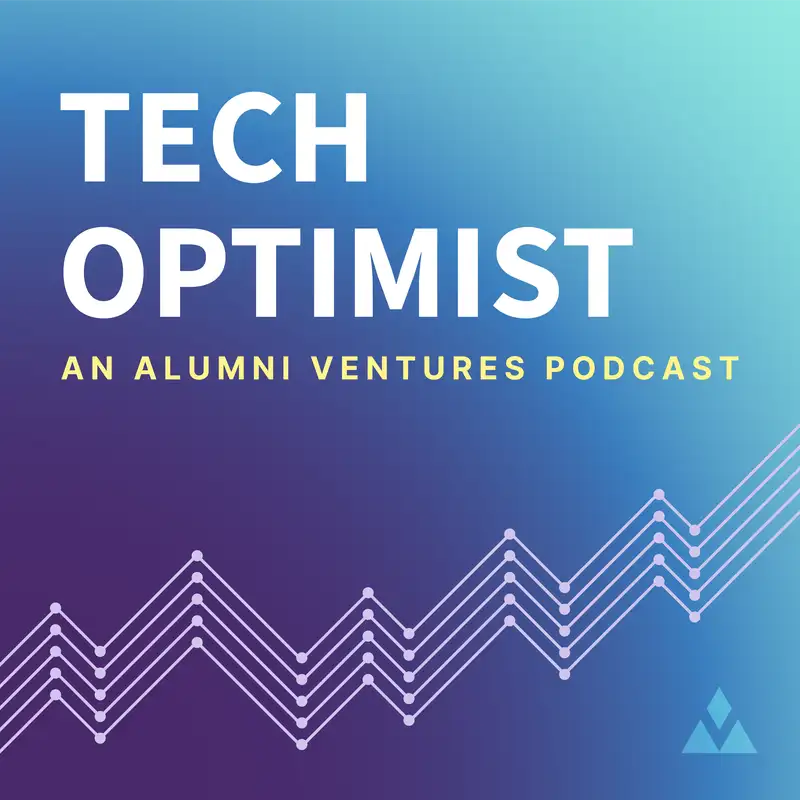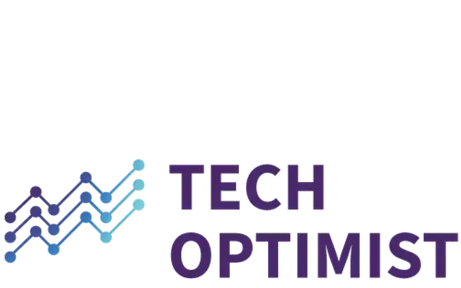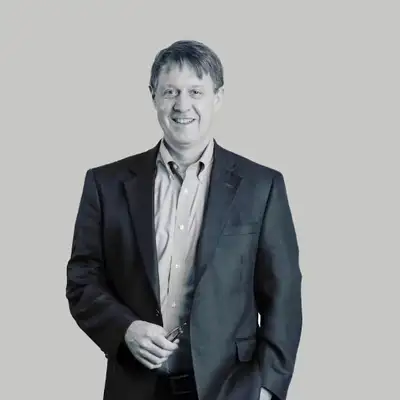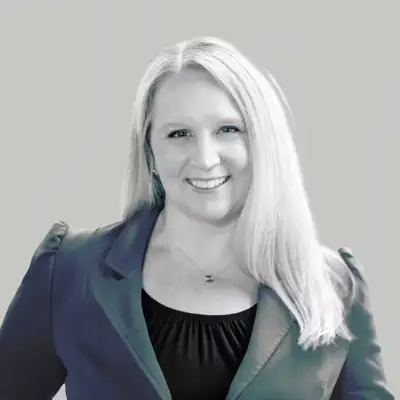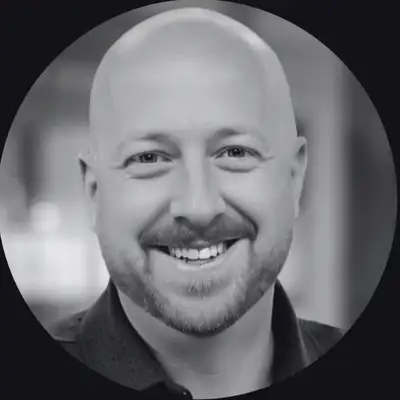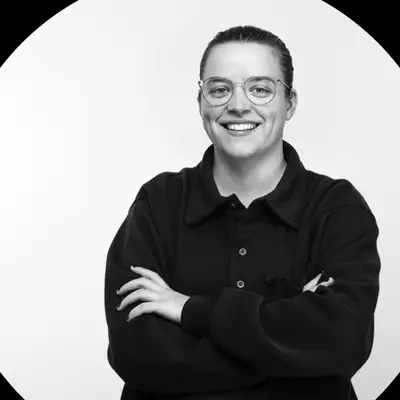#95 - Three Breakthroughs: The Return of Supersonic Travel?
Sam:
What if AI development just got 10 times cheaper? What if supersonic travel made a comeback? And what if we can program life itself? Welcome to The Tech Optimist where we dive into breakthroughs shaping the future. And you guessed it, this is the Three Breakthroughs episode. We've got some three pretty cool one for you today. So let's dive in and explore how this future is unfolding. But before we dive into these breakthroughs, we're going to take a quick pause for a word from our sponsors and an important disclaimer. So stick with us. What's next will blow your mind.
Ad:
Do you have a venture capital portfolio of cutting-edge startups? Without one, you could be missing out on enormous value creation and a more diversified personal portfolio. Alumni Ventures, ranked a top 20 VC firm by CB Insights, is the leading VC firm for individual investors. Believe in investing in innovation? Visit av.vc/foundation to get started.
Sam:
As a reminder, The Tech Optimist podcast is for the informational purposes only. It's not personalized advice and it's not an offer to buy or sell securities. For additional important details, please see the text description accompanying this episode.
To get us started with today's episode, we're going to outline the three pivotal breakthroughs shaping today's episode. But first, let's let Lucas and Mike start us off.
Lucas Pasch:
Hello, welcome everybody to another episode of Three Breakthroughs. I'm here with Alumni Ventures CEO Mike Collins. He is the forever host of this show. He's always sitting down with one of our investment team members. That is myself, Lucas. I am a principal on the investing team. Been on with Mike for a few weeks now and it's been some exciting conversations each week while we've review interesting trends and new releases across the technology world that our investment team is consistently thinking about. I'm so excited to bring some more topics to the forefront today. Mike, how are you doing today?
Mike Collins:
I'm great, Lucas. Good to see you again. It just seems like, oh, a lot going on. I'm convinced it's just going to be power for the course. We're in geometric times. Again, I think you just have to... In this age we have to talk about AI I think in response to DeepSeek. And a really tremendous release from them, we have OpenAI coming out with its o3 models and really a pretty competitive compelling offering, especially in the area of programming, math, science. It seems to be scoring really well there. I think the race is on. And also in responding with a deep research tool.
And just again, for our listeners, these tools are not monolithic. Some do certain things better than others and just ChatGPT-4 was a breakthrough seminal moment, really pretty good at helping with writing, summarizing things, and now basically doing one-shot search of the web, for sure. But now we're finding these reasoning models that can do steps, chain of thought, is another vector to solve different kinds of problems. But I just want to take a minute to talk a little bit about what I think is a real vector, which is research. A lot of what people have used the internet for is to research things either really quickly or really in depth.
Speaker 1:
I'm feeling like that might be my cue. I personally do a lot of research for this show and I'm going to sort of give you a snippet of some of the research I have done for today's episode and help lay out the summary and the outline for today. So first, it's another David versus Goliath showdown in. AI DeepSeek, which if you listen to this show, you are not a stranger to this company, and their predicament that they find themselves in. A Chinese AI company has developed a model rivaling ChatGPT. But here's the kicker, it was built for just $6 million. Meanwhile, US AI leaders like OpenAI are raising concerns about intellectual property theft. And so we're going to ask the questions of is this the future of cost-efficient innovation or a sign of rising tensions in global AI competition?
Next, we're heading to the skies with Boom Supersonic. This one's really cool. This is where the sound barrier isn't just broken. It's completely shattered. For the first time in decades, a privately developed supersonic jet has redefined aviation promising to cut transatlantic flights in half. So could this be the beginning of a high speed travel renaissance? And then finally, to wrap up this episode, we're going to zoom in on synthetic biology where scientists have achieved something extraordinary, the complete engineering of a yeast genome. This breakthrough could revolutionize industries making programmable life a tool for solving problems in medicine, agriculture, and even renewable energy. So these aren't just stories that we're going through today, they're glimpses into the future. From AI rivalries to supersonic jets and programmable biology, each breakthrough is shaping how we're going to live, work, and innovate. So let's get into it.
Mike Collins:
If you want to research a new [inaudible 00:06:00], I'd put that in the quick category. If you want a thorough analysis of the landscape of nuclear fission in 2025, that is something where you would typically have somebody go spend a bunch of time, do a bunch of work, read a bunch of materials, and write a report. And I think the Gemini product, and now OpenAI's product, really says you have both of those things really at your disposal right now. Quick and dirty Google searches I think have been disrupted, but I also think the, "Hey, Lucas, can you go do an analysis of a sector?" Or, "We have a portfolio company that is doing some really interesting work and I just wanted to brief before I talk to the team about it." The ability to prompt them, these tools then go out, literally scan the internet, read the internet, go through chain of reasoning and work for five to 20 minutes, 30 minutes on a problem compared to, "Summarize this memo for me," which is nanoseconds now lets you know that it is really out there doing some work for you. I think it's fantastic.
Lucas Pasch:
Yeah, consider the role of an analyst in financing, a financer or consulting. A chunk of their time is spent on what we might call thinking labor, processing large datasets, identifying patterns, distilling a lot of information from reports. It's not creative work in the purest sense, it's structured, it's rule-based it's repetitive at scale, and it's something that deep research can be utilized heavily. If an analyst no longer has to spend 50% of their time crunching data, they can start to focus on higher order work, strategic thinking, original ideas, creative problem solving. It's like going from being a human Excel monkey to being more of an innovator. So there are some provocative questions to be asking from here on longterm what this does, the nature of analyst type work going forward.
Mike Collins:
And my take on it, and again, I'm parroting here some other tech leaders, but there's a lot of buzz about [inaudible 00:09:01] 20, which is, you just take the job of an analyst or a job of a person who that's a big part of their job. I still think that the best product is 20% human, 80% tool. The issue is the ability to get really good at your 20%, to do it better... So the actual work product is... I don't think this is a substitute, I think this is a 2 plus 2 equals 10 kind of scenario. So the ability to sign work, your ability to very quickly get the basics, but then edit it, coalesce it, change it, reprompt it, compare it to other models, have other models critique it, build on it. The orchestration of it, the synthesis of it, the delivery of how do I communicate this in a way that the audience is going to receive it best? How do I put the human wrapper around it? That 20% I think becomes a bigger differentiator for people.
So again, I think viewing this as like, "Oh, we don't need this. We don't need humans to be analysts anymore," I don't think is true. I think you can maybe have fewer really good analysts. And the analogy here is what we're seeing also in programming, which is these tools are amplifiers and I need fewer lower level people. I can amplify the best people who can do much more higher level stuff, but everybody along the chain, this is really an important tool for.
The other part of AI this week is I think there was again just continuing conversation about the DeepSeek shock to the system about like, "Oh," which again, I took as, of course, [inaudible 00:11:17] and many other people in the business did. But again, just to double down on why we think that way or I think that way in particular, I'll speak for myself, which is I think these tools and this pace of innovation, you're backing on businesses that actually benefit from this kind of stuff. We're not looking to out Google in foundational models. Most VCs are looking to solve a problem, create a new job, create a new solution to something that's been around where the benefit of having a portfolio of tools to help you solve that problem better is going to put gas in your tank. Yes, we will have some investments I'm sure that are going to be stomped by the elephants here, but that's because we didn't get it right.
When venture capitalists and innovators are using these things, these are tools. We are a FinTech company ourselves that is disrupting venture capital. These tools make us better and let us solve our customers' problems, both our portfolio companies that we serve and our retail customers. The more competition the better. And I was talking to one of our engineers today who was doing some work and it's like... They were using DeepSeek for something and then they were using 3o-mini or o3-mini, excuse me, for some other stuff. So it's like bring it on, so.
Speaker 1:
All right, you know what time it is. Hang tight, we've got an ad and then we'll be right back.
Speaker 2:
Exceptional value creation comes from solving hard things. Alumni Ventures Deep Tech Fund is a portfolio of 20 to 30 ventures run by exceptional teams who are tackling huge opportunities in AI, space, energy, transportation, cybersecurity, and more. These game-changing ventures have strong lead venture investors and practical approaches to creating shareholder value. If you are interested in investing in the future of deep tech, visit av.vc/deeptech to learn more.
Lucas Pasch:
Yeah. To your point, the customers of these products are not monolithic, and it creates a world where companies like OpenAI should not and will not suffer from the innovator's dilemma. They will continue to release new products that will cater to new people and at times will cannibalize former products, but that's okay. And the release of a product like o3-mini, much of how that release came out might have been in part a response to the DeepSeek release, especially the manner which they're making it free at multiple tiers of service for customers. And it's a continuation of a trend where the AI narrative is shifting from being dominated by scale and bigger models and more parameters and larger datasets to something more flexible and dynamic with a variety of different interesting use cases.
Mike Collins:
Yeah. Again, to just echo Clay, who I always fall back on, but he wrote a lot about where value accrues in the value chain. And so listen, there's... Again, I heard another person in the industry just talk about electricity and it's like a tremendous innovation and the ability to light your home at night, but a lot of the value accrued really to society and specific companies that used electricity to do things, electric manufacturing itself wasn't that great of a business kind of thing. So it's like, is AI electricity? I think it's going to have a lot of that characteristics. For me it's one of the things I'm using as an analogy right now is one industries can be totally transformed with electricity, so.
Lucas Pasch:
Yep. Just wait until these models are just super powerful and still lightweight enough to run on edge computing and small devices in the field. Capabilities are endless here. All right, should we shift to our next topic, Mike?
Mike Collins:
Yeah, [inaudible 00:16:23].
Lucas Pasch:
Quick aside, by the way, my infant is going through a sleep regression and my wife is going back to work this week, so if you... Hopefully the mic isn't picking up the sipping of my coffee.
Mike Collins:
My sympathies. As an empty nester, been there.
Lucas Pasch:
All right, so let's talk about Boom Supersonic. Last week history repeated itself in the same Mojave Desert where Chuck Yeager first shattered the sound barrier in the 1940s. Boom Supersonics aircraft achieved its own milestone. It's the first independently developed jet to break the sound barrier reaching Mach 1.1 or about 750 miles per hour at over 35,000 feet. Marks this new era of aviation. This is all about bringing supersonic travel back after more than a couple of decades since the Concorde's retirement, which was retired for a host of reasons that we could circle back to, fuel and efficiency, safety issues, things like that. But Boom's ultimate goal here is the Overture aircraft. That's a co commercial jet designed to fly at Mach 1.7. It will cut transatlantic flight times in half. Major airlines like American, United, Japan Airlines have already lined up with 130 orders or pre-orders signaling real demand for faster than sound passenger travel.
Mike Collins:
A couple of things here, which is echoing Chuck Yeager. This reminds me a little bit of space. We made tremendous progress in space exploration with Sputnik and the landing of Man on the Moon, and then frankly, it was a lot of sideways activity for a long, long time. Recently, the last five years, we've seen a rebirth with the private sector getting involved and tremendous entrepreneurship and innovation, and we're back in the game. And you think about airline travel, it's one of those things where you go back in time 40 years and you look at what people could do with computer technology and it's like you wouldn't recognize it, it's magic.
Speaker 1:
Let's talk a little bit about that magic. When was the last time you imagined cutting your flight time in half? For Boom Supersonic, that vision is close to reality. Founded in 2014 by Blake Scholl, Boom is on a mission to make faster, more affordable and sustainable air travel accessible to the world. This month, Boom's XB-1 demonstrator, also known as Baby Boom, achieved a historic milestone by breaking the sound barrier for the first time. This test flight is a key step forward in the company's ultimate goal, launching its flagship project, the Overture, a Mach 1.7 supersonic airliner that can carry 65 to 88 passengers with orders already placed by United Airlines and American Airlines.
Boom aims to test flights in 2026 with commercial flights taking off in 2030. So Boom isn't stopping at speed, they're also committed to sustainability. From their Symphony engine design and collaboration with Florida Turbine Technologies and GE Additive, to partnerships advancing Sustainable Aviation Fuel or SAF, Boom is blending speed with environmental responsibility. And the ambition doesn't just stop there, Boom is contributing to a NASA led study on concept designs for a Mach 4 airliner, exploring the next frontier of aviation.
With over 150 full-time employees, $600 million in funding and manufacturing and Greensboro, North Carolina, Boom Supersonic is shaping a new era of air travel. High speed, sustainable, and game changing, Boom is redefining the skies. Stick with us as we talk about this a little bit more. Let's let Mike take it away.
Mike Collins:
But you look at airline travel and it's like, yeah, it's a little different. It's smokier, but you'd sure be very familiar. We just have not... We've been super safe and despite the recent tragedy in DC it is a tremendously safe form of travel. It's a miracle. But it's really old technology, we haven't been very innovative. We had a supersonic approach that was maybe before its time, definitely had some issues, but it is so refreshing to see entrepreneurs and venture capitalists and the world looking to can we now, with technology, AI, material science, there's a bunch of stuff coming together where we can do better.
Lucas Pasch:
Yeah, much better. You're an executive in New York with a board meeting in Tokyo. Today, it's a 14-hour journey. You're going to lose an entire day in transit, not to mention jet lag. Boom is proposing that you could get there in six hours,. You could leave after breakfast, attend your meeting, and with the time difference, be back home in time for dinner. This upends a lot of what we know about travel. If Zoom brought us closer together, this is another way of bringing us closer together in a more impactful and personal way.
I think the way that this was achieved is really interesting to double-click into, I think. The headline story is, oh, there was this awesome test, but one of the overlooked aspects is everything that went into this where they relied on computational fluid dynamics, essentially simulating the physics of the flight digitally before ever touching metal. So you could call them the first digitally-native aircraft manufacturer. And if that approach works, what are the future disruptions ahead in the aerospace industry writ large? I think just like we could bring the conversation back to AI where developments are getting released on faster and faster and faster cycles, it feels like there are many more shoes to drop in faster and-
Mike Collins:
Again, this is a good application for people to get a grasp of when you can move into from the physical world to the digital world, and you can then apply data and modeling with AI tools and big compute. Again, this was a digitally-native company. AI is a tailwind to designing better materials, better systems, more reliability. I think we'll see robotics in this story of this company as well where you can do much better testing. There's a lot of things that... But at the end of the day, what's the problem? I want to get to Tokyo in 6 hours, not 14. That will make the world a better place. So again, kudos to the team there and proud supporter.
Lucas Pasch:
All right, Mike, do you want to bring us home with the last topic, which is this breakthrough around the yeast genome?
Mike Collins:
Yeah. Again, this is going down a little bit of a niche rabbit hole where I am not an expert, but I know people who are and that they're super excited about, a real breakthrough in synthetic biology, which is really developing artificial life in a much more complex organism, which was a yeast. I think beer yeast is what they were using. It was orders of magnitude more complicated than the last breakthrough, which was about 10 years ago. And it has people very excited. And you're going like, "Okay, whatever. Deep science, what are the applications of this"?
There is ability to produce things now through these types of technologies that not only have significant health implications for all genetic diseases, but we're also talking about the manufacturing of things, drugs, fuels. It has big implications for food production. Big important real world stuff. If you can get in, and this is really a platform play where you're talking about the ability to produce things like drugs orders of magnitude more inexpensively, it opens up markets, it opens up vectors for drug discovery, the ability... Just imagine if you could produce in a lab energy through a safe, clean, petroleum-burning fuel, and it was produced in [inaudible 00:26:42] at scale. It was a big breakthrough.
We'll put links in the show notes so people can read the paper, read the commentary about it, but I think it's important to note that... And again, a lot of this was cooperation among multiple labs. A lot of this was using technology and modeling. The cross-pollination between robotics and AI and insights into biology. Synthetic biology I think is one of the areas that is not getting near the coverage that AI is these days because of the companies involved and the scale. There's really amazing work going on in biology and synthetic biology right now that is really remarkable. This has the industry abuzz with potential.
Speaker 1:
Imagine creating life, not by natural evolution, but by design. That's exactly what scientists have achieved with the first fully synthetic yeast genome. We're going to dive into this a little bit in case you don't want to go through the show notes or read the paper yourself. I'm going to give you a little summary about what happened. So a milestone like a transform industries from medicine to food and beyond. So this month, in February of 2025, researchers completed the Synthetic Yeast Genome Project known as Sc2.0, constructing the world's first synthetic, I might butcher this eukaryotic genome. This wasn't just tinkering with DNA, it was a full redesign of Saccharomyces cerevisiae, or Brewer's yeast, which now boasts 16 engineered chromosomes plus an entirely new neo-chromosome that nature never intended.
But this is more than just a genetic feat. Scientists streamlined the genome removing unnecessary sequences and relocating key genetic functions for better efficiency. Using advanced tools like the CRISPR debug protocol, they debugged the genome to ensure the synthetic yeast could not only survive but thrive, demonstrating improved resilience, including the ability to grow in extreme conditions. So why does this matter? Beyond the science, this breakthrough is a gateway to designing organisms that solve real world problems, think biofuels that burn cleaner, medications that are cheaper to produce, or even climate resistant crops. That could address global food security. It's a bold proof of concept that one day synthetic life could reshape the way we innovate and adapt. So stick with us as we explore how this cutting-edge advancement in synthetic biology could change the world and what's next on the horizon for engineered life.
Lucas Pasch:
Yeah, imagine programming organic material and life forms the way that we program applications. The use cases are tremendous. My mind goes first and foremost to pharmaceutical industry issues where you have very fragile supply chains, especially during a global health crisis like the COVID pandemic. One example I was reading about for this story was there's an anti-malarial drug traditionally sourced from these wormwood plants. That input is very expensive, very vulnerable to supply chain fluctuations. And so with this development and being able to fully build out the synthetic yeast genome, it's a stepping stone in the direction of, "Okay, what if we could build that wormwood input in-house and optimize our supply chain that way?"
Mike Collins:
We've seen this happen in insulin creation when you're able to go synthetically, but there's always shortages of things like plasma and blood. But we also are dealing with vulnerabilities to food supply and safe drinking water, and there are the ability now to... When you can manipulate life, there's very powerful things you can do to the good and to preventing of the bad. And you can take externalities and plastics and create things that can consume those and produce good things. Again, our ability to take life and engineer it is one of the most powerful things that we're going to be looking at in our lifetimes yet.
Lucas Pasch:
Yeah. It's a new revolution. The first industrial revolution powered by coal, the second by oil, third by silicon chips, and maybe the next one is synthetic biology. It has the feel of something where... I don't know, it's like an organic version of 3D printing where 3D printing writ large has delivered in really interesting ways, but has under-delivered compared to where our expectations were like 10 to 15 years ago. Interested to see where this development brings us in the next decade.
Mike Collins:
Yep. Excellent. Okay, Lucas, drink your coffee and get some sleep and we'll do it again.
Lucas Pasch:
Thanks, Mike. Looking forward to next week. Bye.
Speaker 1:
Thanks again for tuning into The Tech Optimist. If you enjoyed this episode, we'd really appreciate it if you'd give us a rating on whichever podcast app you're using, and remember to subscribe to keep up with each episode. The Tech Optimist welcomes any questions, comments, or segment suggestions, so please email us at info@techoptimist.vc with any of those. And be sure to visit our website at av.vc. As always, keep building.
